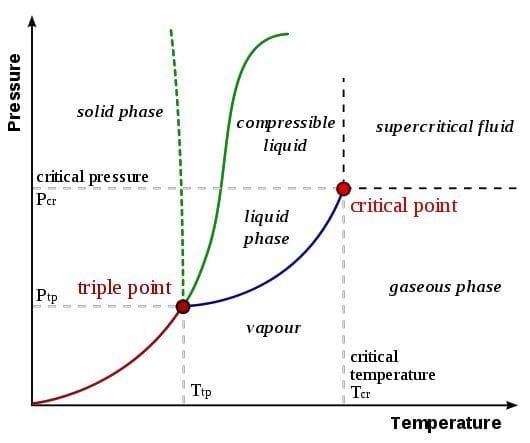Funtabulously Frivolous Friday Five 060
Just when you thought your brain could unwind on a Friday, you realise that it would rather be challenged with some good old fashioned medical trivia FFFF, introducing the Funtabulously Frivolous Friday Five 060
Question 1
In 1951, over 150 people in the French village of Pont-Saint-Esprit were afflicted with an unusual condition. Symptoms included nausea and vomiting, severe cramps and pain, fevers, psychosis and convulsions. As a result, all of the village’s bakeries were closed. What was the cause?
Reveal the funtabulous answer
St. Anthony’s Fire aka ergotism— caused by the ingestion of the alkaloids produced by the Claviceps purpurea fungus which infects rye and other cereals. One of these alkaloids, ergotamine, was used by Albert Hofmann when he first synthesised LSD in 1938.
Ergotism may present with gastrointestinal symptoms (nausea, vomiting, diarrhoea and abdominal cramps), neurological symptoms (paresthesiae, spasms, convulsions), psychosis and ischemia from systemic vascoconstriction (gangrene, myocardial infarction, strokes, etc).
Outbreaks were common in the Middle Ages, and one of the first references is purported to be in the Annales Xantenses for the year 857:
“a Great plague of swollen blisters consumed the people by a loathsome rot, so that their limbs were loosened and fell off before death.“
The epidemic of madness that afflicted the villagers of Pont-Saint-Esprit has been described as follows:
“No one slept for days, most people walked about in a beatific haze, although some were straddled with strange compulsions and delusions. The worst cases went psychotic – screaming about the tigers that were eating them alive, or about the balls of fire shooting towards them. A few really believed they could fly and jumped out of second story windows trying to prove it.
In the Middle Ages monks of the Order of St. Anthony were reputed to be successful healer’s of this condition, hence the name. St. Anthony is also considered a protector against fire, epilepsy and infection.
The story of Pont-Saint-Esprit is retold in a book by John G. Fuller, ‘The Day of St. Anthony’s Fire‘, and more briefly in Time magazine.
Ergotism should not to be confused with that ‘other’ St. Anthony’s Fire, erysipelas.
Question 2
What is the significance of the temperature -119 Centigrade to the use of medical gases?
Reveal the funtabulous answer
It is the critical temperature of oxygen: oxygen’s critical temeprature is −118.6 °C (155 K)and its critical pressure is 49.8 atm (5,050 kPa).
The critical temperature is the temperature above which a gas cannot be liquefied by pressure alone. To store gases in liquid form they must be cooled to well below their critical temperatures.
Question 3
What has the myth of Prometheus got to do with cirrhosis of the liver?
Reveal the funtabulous answer
From The Breakfast Club, a post on medical teacher extraordinaire Tim D. Koelmeyer:
“Koelmeyer used many tricks and ploys to cajole us into learning. He would integrate the classics and literature into the understanding of disease. For instance, we learnt that the pathophysiology of cirrhosis mirrors the myth of Prometheus, who stole fire from the Gods to give to humankind. When chained to a mountain by the angry Olympians as punishment, birds of prey would descend to pick at his liver. Prometheus would undergo the same ordeal each and every day as his liver always grew back. Thus we learned of the many causes of cirrhosis, the regenerative properties of the liver, and the torture of chronic liver disease.”
To put it more bluntly: There are many causes of cirrhosis (many eagles), the liver has considerable powers of regeneration (it grows back), it ruins your life and it is often traced back to something that in retrospect really wasn’t a very good idea — such as excessive alcohol consumption, IV drug abuse, tattoos or sex (or giving fire to humankind)…
Question 4
How did the sixth Plantagenet King of England, Edward II, die?
Reveal the funtabulous answer
Unfortunately the popular story of him having had a red hot poker shoved up his rectum appears to have little basis in fact, and is probably a tall story that didn’t really catch on until the mid-1400s, about 100 years after his death. The story may be related to accusations that Edward II was bisexual and a sodomist.
This is the traditional account of his death according to the Edward II blog:
“After Edward II’s forced abdication in January 1327, he was first ‘imprisoned’ at Kenilworth Castle, under the care of his cousin Henry of Lancaster, who treated him with respect and honour. In April, he was transferred to Berkeley Castle, Gloucestershire, where his jailor was Thomas, Lord Berkeley — the son-in-law of Roger Mortimer. Berkeley had been imprisoned for several years by Edward, and his father had died during his own imprisonment, so he had little reason to like the king.”
“The chronicle of Geoffrey le Baker, written about thirty years later, mentions Edward’s ill-treatment. He was held in a cell above the rotting corpses of animals, in an attempt to kill him indirectly. But Edward was extremely strong, fit and healthy, and survived the treatment, until on the night of 21 September 1327, he was held down and a red-hot poker pushed into his anus through a drenching-horn. His screams could be heard for miles around.”
The truth, it seems, is that no one really knows whether Edward II died while imprisoned in 1327, or whether he died of natural causes, was murdered by suffocation (another popular theory) or whether he was was “killed per cautelam, by a trick…” or “per cauterium, by a branding-iron”.
Question 5
What is Valsalva retinopathy?
Reveal the funtabulous answer
Macular hemorrhage that occurs on one or both eyes following a valsalva manoeuvre due to the rupture of superficial capillaries.
Although there may be loss of vision, the prognosis is excellent with full recovery typically occurring over a period of weeks.
Check out this great case from EyeRounds.org —Valsalva Retinopathy: Vision loss after asthma attack — which is the source of the image below:

FFFF
Funtabulously Frivolous Friday Five
Chris is an Intensivist and ECMO specialist at The Alfred ICU, where he is Deputy Director (Education). He is a Clinical Adjunct Associate Professor at Monash University, the Lead for the Clinician Educator Incubator programme, and a CICM First Part Examiner.
He is an internationally recognised Clinician Educator with a passion for helping clinicians learn and for improving the clinical performance of individuals and collectives. He was one of the founders of the FOAM movement (Free Open-Access Medical education) has been recognised for his contributions to education with awards from ANZICS, ANZAHPE, and ACEM.
His one great achievement is being the father of three amazing children.
On Bluesky, he is @precordialthump.bsky.social and on the site that Elon has screwed up, he is @precordialthump.
| INTENSIVE | RAGE | Resuscitology | SMACC


